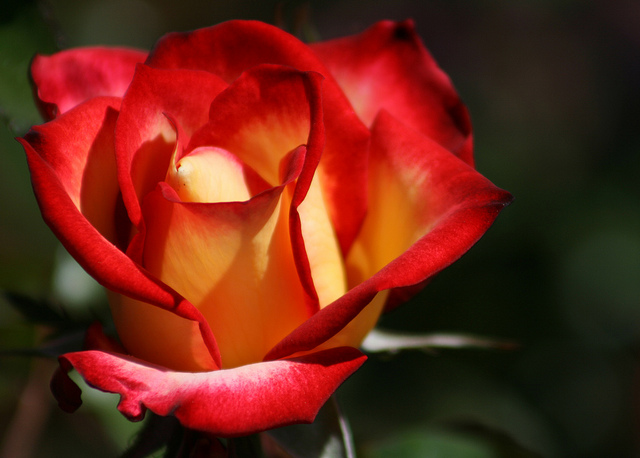Roses come with the stigma that they’re difficult to grow. In fact, growing roses is quite simple, you just need the knowledge and tools to succeed. Before you even think about driving to the garden center to pick up your first rose plant, it’s time to study up on the basic requirements of roses.

Soil requirements for growing perfect roses
Roses grow best in soil with a pH of 6.5. The soil should be tested before planting and amended if needed. Roses also prefer rich, loamy soil with good drainage. They hate to sit in water and will die if too wet, so it’s essential to provide good drainage.
Compost should be mixed into the soil before planting to act as a fertilizer and natural pesticide for the plant.
How much water is too much?
Plants that are lacking in sufficient water become stressed, which makes them vulnerable to diseases and pests, and ultimately death. Make sure your roses are getting enough water with this easy guideline.
For the first few weeks after planting, roses should be watered two to three times per week. After the roots have established, the plants can be watered deeply once a week, or twice a week in hot weather. Roses appreciate soaking to quench deep roots, rather than a sprinkling on top of the soil.
It’s also recommended to use a layer of mulch around the base of the plant to prevent evaporation and keep the soil moist.

How much sun do roses need?
Roses prefer growing in full sun (6+ hours daily) but many varieties can also grow quite well in partial shade. Rose plants that get less sun will bloom less frequently and may have more problems with pests and disease. In order for roses to truly thrive and blossom to their fullest potential, they should receive at least 6 hours of sun per day.
Where and when should I get my roses?
Roses can be ordered from seed companies and online nurseries. Ordering in late winter/early spring is best. This is because most roses from mail order come as bare root plants, a dormant plant packed in peat moss. These roses should be planted quickly, while they’re dormant or just after they begin growing. Follow the instructions from the nursery to care for the bare root rose before planting.
You can also purchase roses at your local garden center, home improvement store, or farmers market. These roses will likely come in containers and the roots will need to be loosened before planting.

How to plant roses
It’s best to plant to roses in the spring, after the soil has warmed. Choose a location that gets at least 6 hours of sunlight per day and is protected from harsh winds.
1. Dig a bigger hole than you think you need.
The roots of roses have a tendency to remain within the bounds of the hole you dig, so it’s essential to dig a very large hole before planting. The recommended size is 2-feet-wide by 2-feet-deep.
2. Roses love to eat!
Roses need plenty of organic matter to feed on , so it’s really important to amend the soil in the planting hole with compost or aged manure before you plant.
After digging the large hole, mix the removed soil with compost or aged manure at a ratio of 1:1. Toss a handful of bonemeal in with the soil, and put about 1/3 of the soil back into the hole.
3. Place the plant into the hole.
This next part is strongly contested upon among rose growing experts worldwide, to bury the bud union or not? The bud union is the place where the canes meet the stem in grafted roses.
Most experts agree that those living in areas with harsh winters should bury it under several inches of soil to help protect the plant, and those living in milder climates should plant with the soil line at the bud union.
4. Water thoroughly.
Fill in around the plant with the rest of the soil and gently pat down the soil. Slowly pour several gallons of water over the site. The water should be soaking into the soil —it’s time to stop when it starts pooling around the plant.

Share tips, start a discussion or ask one of our experts or other students a question.
No Responses to “A Primer on How to Plant Roses”